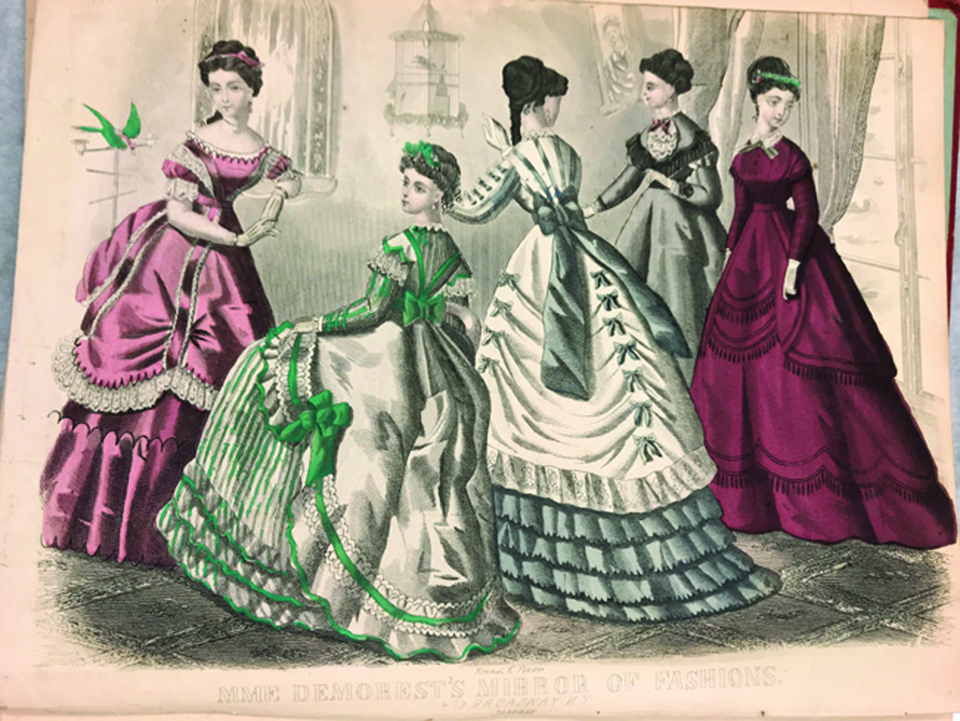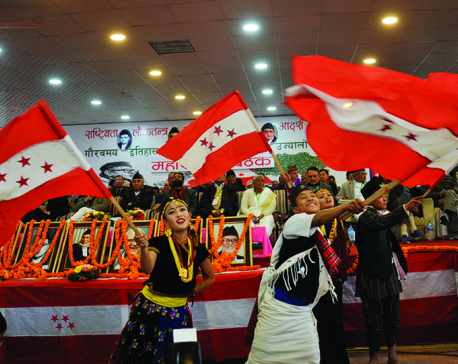
OR


Mukesh Baral
The author is Cofounder at Advocacy for Refugee and Immigrant Services for Empowerment (ARISE), a nonprofit organization based in Massachusettsmukeshbaral@yahoo.com
The more men required behavioural change to curb their sexual misconducts, the more they found women guilty of inciting sexual urge in them and imposed extra fabric on them
She was expected to dress up for a picture day and she had. There was one problem though: The bow had to be tied—at the back—with a set of extra fabric hanging by the sides which was a part of the dress. “Papa, can you help tie this?” I knelt down and started tying a bow. “Papa do you know why dresses have bows?” “No, I don’t.’
Never in my life had I thought about an extra fabric attached to the dresses. “From next time can we get a dress that does not have a bow?” She asked. “Sure we can try, but why don’t you want bows?” “Bows come off very easily during play and it is difficult to tie them back without help,” she responded. “Never knew that bows are such a nuisance,” I expressed ignorance. “Well, now you know,” she shot back.
The bow literally looked like little wings. She looked like a butterfly fluttering her wings ready to enjoy spring. After dropping her off at school, I started thinking about the conversation I had with her. The dresses that I have been seeing her in, ever since she was a baby, have issues that I had failed to see. First, as she stated, it was inconvenient. She needed to be extra careful while walking and playing. It also required her to ask for support to tie her bow at the back even when she was not comfortable asking. And, above all, puffed up dresses with fluttering wings at the back was a baggage of social values enforced on her by her own parents. The culture of looking at girls as delicate and beautiful, like a butterfly, itself was a problem.
My girl was born on a Father’s Day. And probably I took her as a perfect Father’s Day gift. She was the cutest thing I had ever seen in my life. And I had promised to give my best-self in raising her. I don’t know how I became a henchman of popular culture that enforced a dress code on my daughter without considering her level of comfort. And as a father, who has always emphasized intelligence over external beauty, I also failed in my own assessment. She was carrying the burden of conforming to the norms for a picture day. It was not mandatory to be wrapped up and bowed, and the expectation to dress up could have been interpreted in several ways.
Since she wears T-shirts and jeans/ trousers to school, she was able to compare and contrast what comfort means when it comes to fluffy dresses with dangling fabric as big as elephant ears. And because we have raised her to speak her mind, she is fairly comfortable to voice her concerns freely—without any fear of being judged or ignored.
Fabric of patriarchy
That conversation really got me thinking about women’s wear vs men’s wear. How on earth almost all the so-called great cultures and civilizations came out with so much of fabric wrapped around their daughters? Be it Europeans or South Asians or Middle Easterners (or pick your civilization), women carry so much of fabric on them. Some civilizations even veil their daughters from head to toe. If it is not for the patriarchal social norms, I wonder how on earth almost all the civilizations came up with similar ideas. Girls in almost all civilizations and cultures are trained to wear so much of fabric that they really need to figure out a strategy to carry all that fabric through the highway of social acceptance, considering the the prying eyes.
Europeans, probably thinking “more the merrier,” unnecessarily added fabric on the dresses to show off. That was a time before the industrial revolution and clothes were a luxury then. Every meter of clothing meant richness—and those rich enough to buy more overburdened their loved ones with more than required. Even today, brides wear dresses with looser ends that need to be carried by half a dozen people. Priyanka Chopra, one of my favorite actresses, made news by wearing a veil 75 feet long during her wedding. Social practices totally get into our head and become a norm without us realizing it.
Mahatma Gandhi started a national independence movement with Charkha Andolan and liberated Indians from the grip of British rule, weaving his own clothes and boycotting everything that belonged to East India Company, ultimately forcing the entire British Empire to leave India. Gandhi knew the power of self-made fabric—it not only stripped Britain from the economic benefit but also balanced the need and want. Wear what you can produce is a good measurement to curb the unnecessary pomp conveyed through extra fabric.
Nowadays, even miniskirts could be more expensive than the longest wedding gowns. Less does not signify poverty any longer. In fact, it could be the opposite because of how value of clothes has evolved through the lens of comfort. The freedom of the whole idea of wearing clothes is totally redefined. But still, for some reason, unlike men, women are crushed by the cultural expectation of “proper” dress code.
Nepali and Indian women wrap around four to eight meters of sari around them and are also expected to work draping them. A patuka, which is largely out of fashion now, is a lot of fabric wrapped around a body which does not look comfortable. When I think about that, I feel like we have mummified our daughters alive. We do what Egyptians do for dead. We have mummified our girls alive. They are mum because patriarchy will do whatever it takes to establish their superiority. Just think about all those dangerous corridors, and the rough terrains— real and psychological—girls have to walk with these difficult to wear and impossible to assemble dresses, in a country tainted by rape. But still we blame women for not covering enough. In fact, the more men required behavioral change to curb their sexual misconducts, the more they found women guilty of inciting sexual urge in them and imposed extra fabric on them.
It will be interesting to measure guys in saris and patuka or even in skirts and compete with them. Instead of recognizing the hurdles men have put in the names of dress codes, we declare them slow and weak. I bet the theory of faster boys will be deconstructed in a matter of seconds.
Abuse and mummification
The culture of mummification did not start today. It can be seen in our sacred texts as well. For instance, in Mahabharata, Draupadi is recorded to be sexually abused in front of her five brave husbands (their bravery requires a separate discourse). And because of their inability to protect Draupadi, Krishna, the god of unending fabric, came to her rescue. This is what patriarchy does to our daughters. Even when Draupadi had powerful hands in the form of husbands and in-laws to protect her from sexual abuse, they failed to protect her. And the same patriarchy came up with a mythical fabric through the hands of Krishna because it did not want to deal with the real problem of its “brave” men and the culture of sexually abusing its own daughters. Instead of questioning the moral values of Hastinapur that was pulling off the last fabric off Draupadi, their very own daughter, they provided an unending fabric to her sari. Not addressing the root causes of sexual abuse—behavior of men— and instead mummifying our daughters still persists. I hate to confess but I am a product of that culture. A culture that is expecting women to drape around 26 feet of loose ends clothing and leave them vulnerable on those who have sexually abused them for generations.
The myth of unending fabric through the hands of Krishna has become a reality now. Thanks to the industrial revolution, India produces so much of fabric that it needs to continuously inject the minds of young and old that more is merrier especially when it comes to women’s wear. The entire Indian fabric market might collapse, the day women decide what to wear, the day they realize that patriarchy has been dressing and undressing them for generations, the day they look for something comfortable they can wear every day. The day women stop their fascination to the fabric that is cumbersome to carry and unsafe in emergencies. That day they, in a real sense, will liberate themselves from the chains of patriarchal dress codes. It will be the new Indian independence for the half Indian sky. When it comes to Nepal, it’s a carbon copy. The style wears of Indian soap opera protagonists are seen in the wedding halls of Nepal within a month, if not earlier. Women in Nepal will definitely be touched by the liberation wave of India.
In the evening, when I picked her up, her bow had gone loose. The fabric was dangling by her sides but she did not request me to tie it up. I did not feel necessary to tie it for her either. On the way home I gave her the good news of bow-less dresses. I also told her that she does not have to wear them if she prefers to wear something else instead. Next time on a picture day, she will wear what she prefers and what she feels comfortable in. After all, it is a picture day. I want my daughter’s comfort and confidence captured in the picture, not the dresses.
You May Like This

Making every dollar count
Cost-benefit analysis can play a vital role in shining a light on interventions and investments that achieve the most for... Read More...

Move like ants
Have you seen ants stuck in traffic? Researches have proven that if we all drove more like ants walk, we... Read More...

Trying to rise
Until Congress gets multidimensional, changeable and dynamic actors in leadership position, the party won’t be able to come out of... Read More...





Just In
- NRB introduces cautiously flexible measures to address ongoing slowdown in various economic sectors
- Forced Covid-19 cremations: is it too late for redemption?
- NRB to provide collateral-free loans to foreign employment seekers
- NEB to publish Grade 12 results next week
- Body handover begins; Relatives remain dissatisfied with insurance, compensation amount
- NC defers its plan to join Koshi govt
- NRB to review microfinance loan interest rate
- 134 dead in floods and landslides since onset of monsoon this year












Leave A Comment